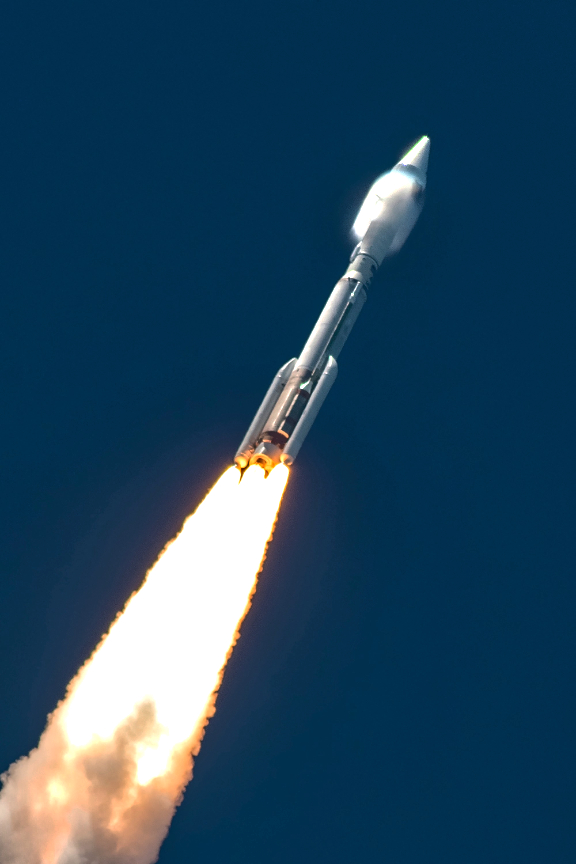
A United Launch Alliance (ULA) Atlas V rocket carrying the Space Based Infrared System Geosynchronous Earth Orbit (SBIRS GEO) Flight 5 mission for the U.S. Space Force’s Space and Missile Systems Center (SMC) lifted off on May 18 at 1:37 p.m. EDT from Space Launch Complex-41 at Cape Canaveral Space Force Station. To date, ULA has launched 144 times with 100 percent mission success.
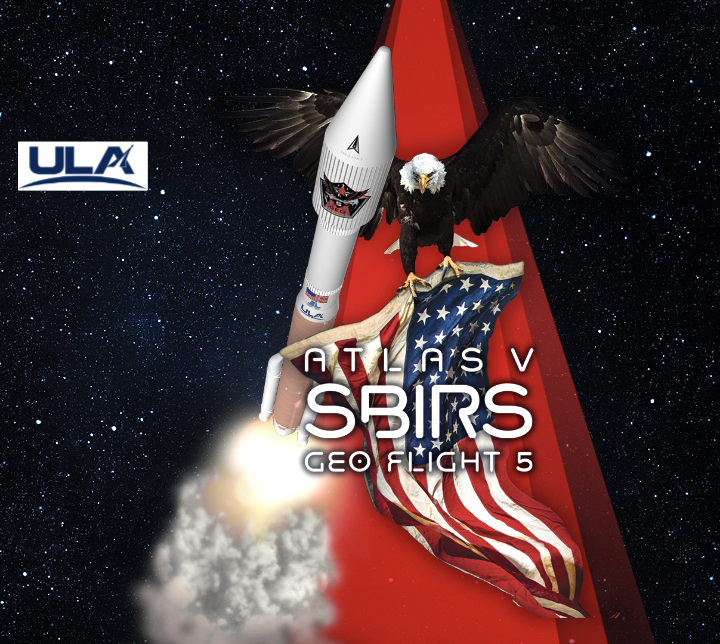
“Thank you to our mission partners for the tremendous teamwork as we processed and launched this asset that provides powerful surveillance and critical capabilities to protect our warfighters,” said Gary Wentz, ULA vice president of Government and Commercial Programs. “We are proud to work with the U.S. Space Force to continue to meet the national security needs of our country.”
The mission launched on an Atlas V 421 configuration rocket that included a 13.7-ft (4-m) Extra Extended Payload Fairing (XEPF). The Atlas booster for this mission was powered by the RD AMROSS RD-180 engine. Aerojet Rocketdyne provided the RL10C-1-1 engine for the Centaur upper stage and the two AJ-60A solid rocket boosters.
This was the 87th launch of the Atlas V rocket and the 72nd Atlas V to launch from Space Launch Complex-41 in Florida.
ULA’s next launch is the Space Test Program (STP)-3 mission for the U.S. Space Force’s Space and Missile Systems Center, planned for June 23, 2021, from Cape Canaveral Space Force Station, Florida.

“Thanks to the diligent efforts of the government and contractor teams, the SBIRS program has launched another critical asset into the nation’s Overhead Persistent Infrared constellation,” said Cordell DeLaPena, Jr., U.S. Space Force Program Executive Office for Space Production. “The SBIRS program not only represents a new era of overhead infrared surveillance offering vital support to the national defense mission, but also the dedication of space acquisition and production professionals to ensuring the U.S. and its allies have increased global situational awareness.”
“Congratulations to the entire integrated team on the first NSSL Atlas V launch of 2021,” said Col. Erin Gulden, SBIRS GEO-5 launch mission director and chief of SMC’s Atlas and Delta Division. “I am proud of our strong partnership across the many government organizations and multitude of industry partners and the team’s unwavering commitment to deliver national space capabilities and critical warfighter support.”
SBIRS is managed by the Production Corps at the U.S. Space Force Space and Missile Systems Center at Los Angeles Air Force Base, California. Lockheed Martin Space Systems Company, Sunnyvale, California, is the SBIRS prime contractor, and Northrop Grumman Space Systems, Azusa, California, is the payload developer. The 460th Space Wing at Buckley AFB, Aurora, Colorado, operates the SBIRS constellation. United Launch Alliance provided launch services for this mission.
The SBIRS program delivers timely, reliable and accurate missile-warning and infrared surveillance information to the president, secretary of Defense, combatant commanders, intelligence community and other key decision makers. The system enhances global missile launch detection capability, supports the nation’s ballistic missile defense system, expands the country’s technical intelligence gathering capacity and bolsters domain awareness for warfighters on the battlefield.
With more than a century of combined heritage, ULA is the nation’s most experienced and reliable launch service provider. ULA has successfully delivered more than 140 missions to orbit that aid meteorologists in tracking severe weather, unlock the mysteries of our solar system, provide critical capabilities for troops in the field, deliver cutting-edge commercial services and enable GPS navigation.
Launch postponement story…
ULA Launch Director Steve Huff has announced that countdown operations for this USSF SMC SBIRS GEO Flight 5 push into space has been postponed. During the Centaur liquid oxygen (LOX) chilldown operations, the team identified an anomalous system response that could not be resolved within the launch window. Launch Conductor Scott Barney will lead his team through activities to ensure the safety of the Atlas V rocket and Space Launch Complex-41 facilities following this scrub declaration. Another launch attempt will be possible in 24 hours, with tomorrow’s target liftoff time (May 18, 2021) at 1:31 p.m. EDT (1731 UTC)
Initial launch information story…
A United Launch Alliance (ULA) Atlas V rocket is in final preparations to launch the Space Based Infrared System Geosynchronous Earth Orbit (SBIRS GEO) Flight 5 mission for the U.S. Space Force’s (USSF) Space and Missile Systems Center (SMC).
The launch is on track for May 17 from Space Launch Complex-41 at Cape Canaveral Space Force Station. Launch is planned for 1:35 p.m. EDT. The live launch broadcast begins at 1:15 p.m. EDT on May 17 at this direct link…
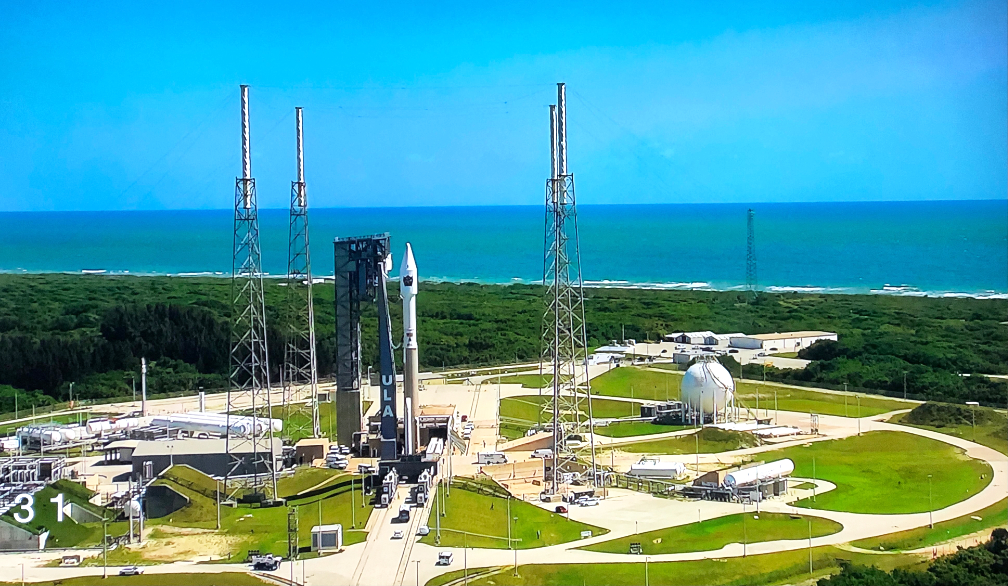
ULA has launched all SBIRS GEO satellites to date and will launch this fifth and the sixth satellite to complete the constellation. The SBIRS constellation, built by Lockheed Martin, consists of a network of GEO satellites and HEO payloads that provide persistent, infrared surveillance – as well as sophisticated ground control systems that manage the data – to support missile warning, missile defense, battlespace awareness and technical intelligence. Additionally, SMC’s Mission Manifest Office, in partnership with the United States Air Force Academy, will be flying the EZ-3 and EZ-4 flight systems on this mission. The program is a high-priority for the U.S. Space Force (USSF), offering key support and cutting edge space technology to the national defense portfolio.
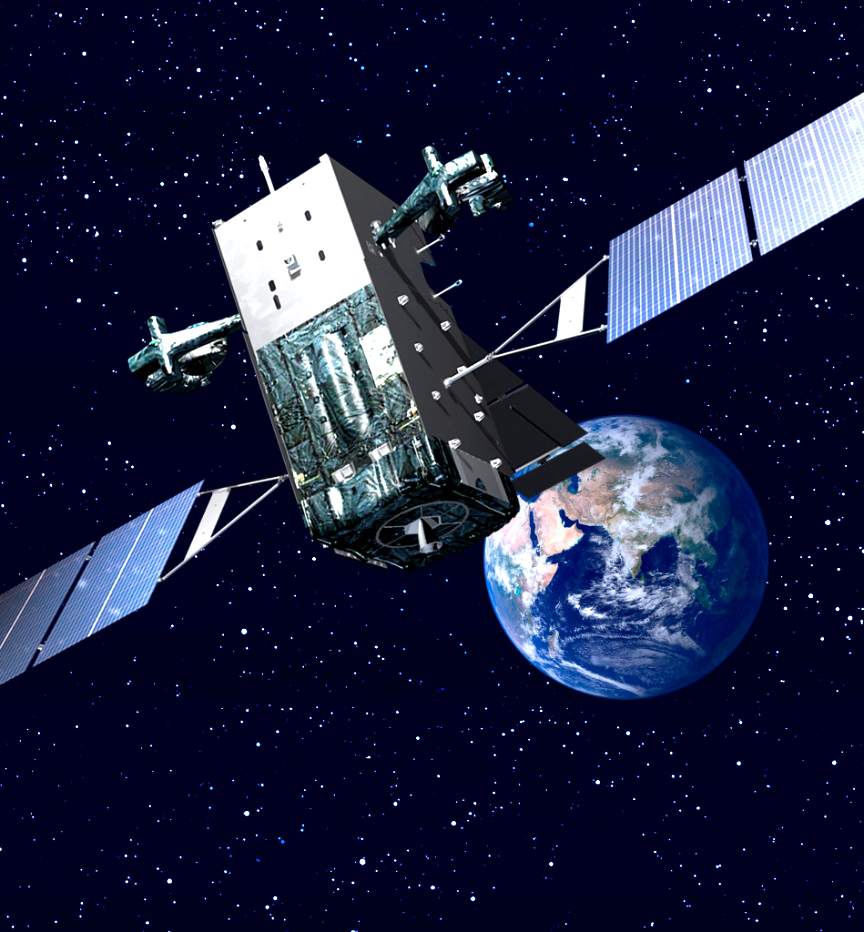
The mission will launch on an Atlas V 421 configuration rocket, that includes a 13.7-ft (4-m) Extra Extended Payload Fairing (XEPF) and stands 194 ft. (59 meters) tall. The Atlas booster for this mission is powered by the RD AMROSS RD-180 engine. Aerojet Rocketdyne provided the RL10C-1-1 engine for the Centaur upper stage and the two AJ-60A solid rocket boosters.
The SBIRS team is led by the United States Space Force Space and Missile Systems Center’s Production Corps, located at Los Angeles Air Force Base, California. SMC’s Launch Enterprise leads the combined government/contractor launch effort. Lockheed Martin is the SBIRS prime contractor, with Northrop Grumman Space Systems as the payload integrator. U.S. Space Force operates the SBIRS system.
This will be the 87th launch of the Atlas V rocket and the 72nd Atlas V to launch from Space Launch Complex-41 in Florida. To date ULA has launched 143 times with 100 percent mission success.
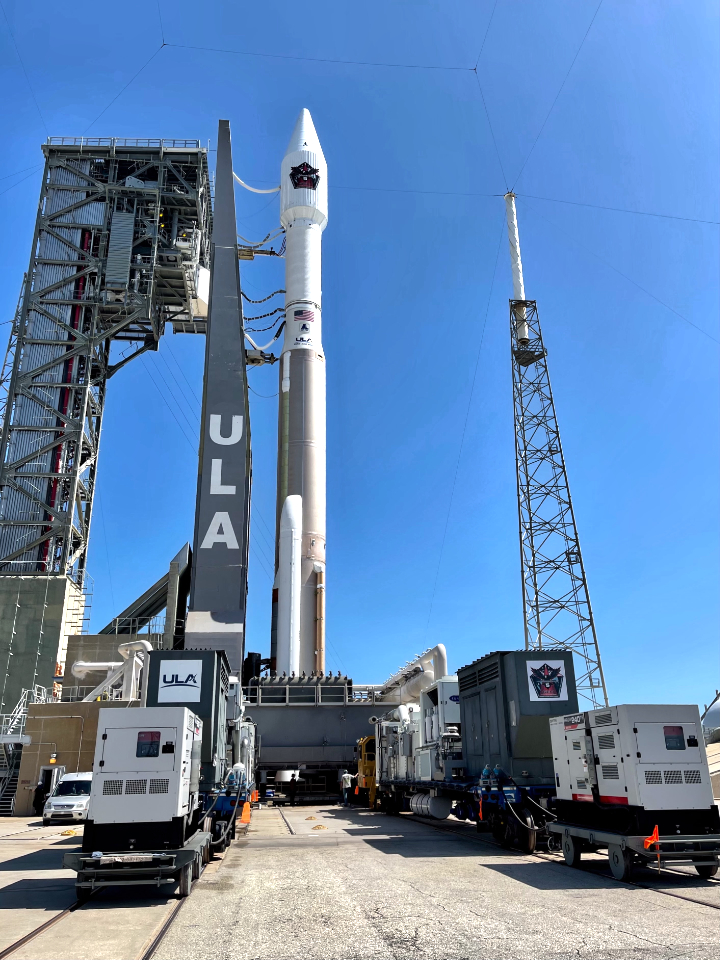
“We take our role in national security very seriously and pride ourselves in being partners in space with the U.S. Space Force. We are launching critical capabilities for the warfighter and understand the need for reliability and consistency,” said Gary Wentz, ULA vice president of Government and Commercial Programs. “This mission marks our 91st launch in support of national security space. As we prepare to launch the fifth SBIRS mission, we thank our partners for their outstanding teamwork and collaboration.”
“We’re building strong momentum with the fifth SBIRS GEO satellite ready for launch and the sixth currently in production. Thanks to our mission partners at Lockheed Martin Space Systems and United Launch Alliance, these satellites will soon be contributing to the Space Force’s critical missile-warning mission that protects our nation and allies every single day,” said Lt. Col. Ryan Laughton, SBIRS GEO- 5/6 production materiel leader.
“We are looking forward to this first USSF launch this year from CCSFC with our mission partner ULA and the GEO-5 satellite team,” said Col. Erin Gulden, SBIRS GEO-5 Launch mission director and chief of SMC’s Atlas and Delta Division.
The Atlas V rocket has launched more than 80 successful missions across a span of nearly 20 years. The Atlas V 421 has been ordered for this mission with a 4 meter payload fairing, two solid rocket motors, and a single-engine Centaur upper stage.
